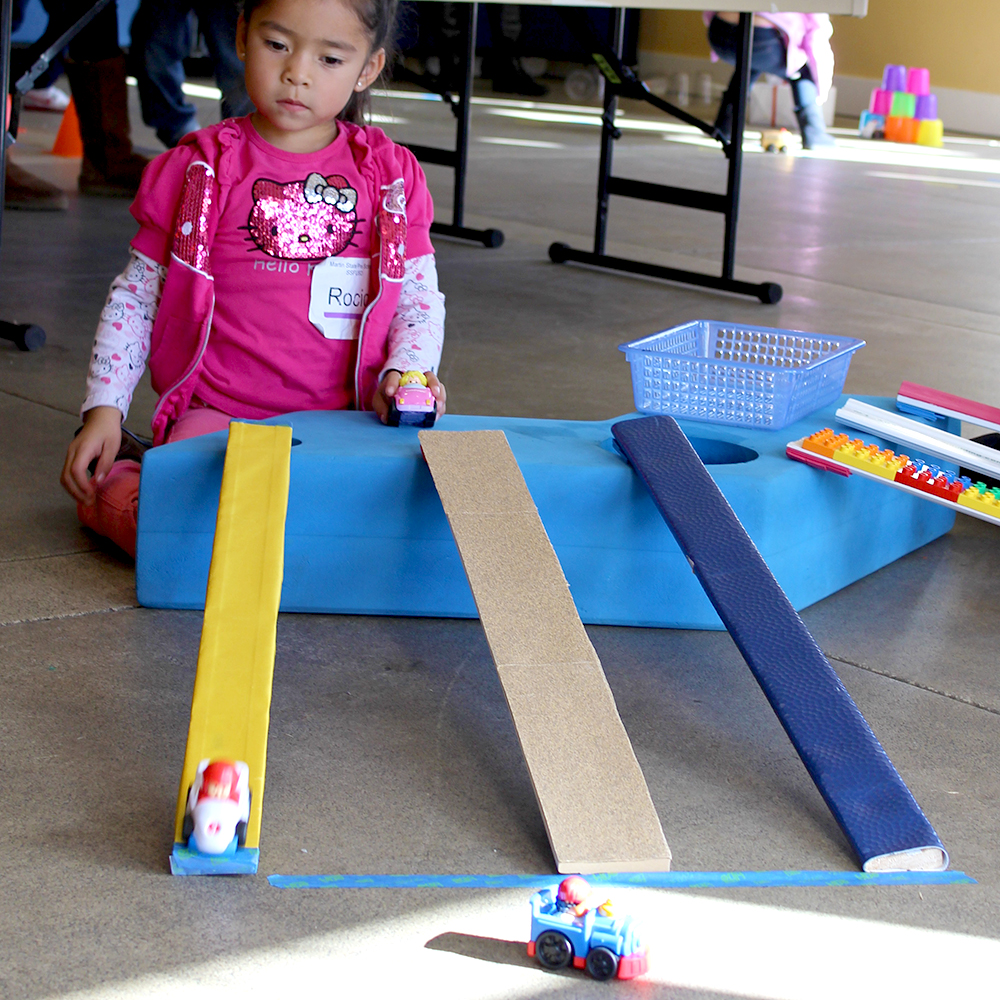Compete in a slow race! Investigate how a toy car moves over different surfaces. Find the texture that creates the most friction and causes the toy car to travel the slowest down a ramp. This activity helps children learn flexibility and creative thinking skills.
Materials Required
- Piles of books
- Planks of wood (about 2-3 feet each)
- Textured materials to create different surfaces such as satin fabric, sandpaper, Legos, fleece, rubber, and towels
- Glue
- Scissors
- Toy cars
Instructions
- Create ramps for the toy cars using the planks of wood. Cover the planks of wood with various materials to create different textures on the ramp. Try satin fabric, sandpaper, Legos, fleece, rubber, towels, or any other items with unique textures. Glue the materials onto the planks and let dry.
- Create a pile of books for each ramp. Make sure all the piles are the same height.
- Lean each ramp against a pile of books, making sure all ramps are at the same angle.
- Take a toy car and release it down the ramp. Try to let it go (and not push it) so it goes as slow as possible.
- As you explore the different ramps, consider:
- Which car traveled farthest? Why?
- What did you notice about the car when it traveled on the sandpaper ramp? What did you notice when the car traveled on the Lego ramp? What about the other ramps?
- Which surface slowed down the cars the most? Why?
- Which surface caused the most friction? Why?
- Which surface caused the least friction? Why?
Additional Tips
Instead of using toy cars and wooden planks, try this activity with balls and paper towel rolls (cut in half lengthwise) covered in different textures.



